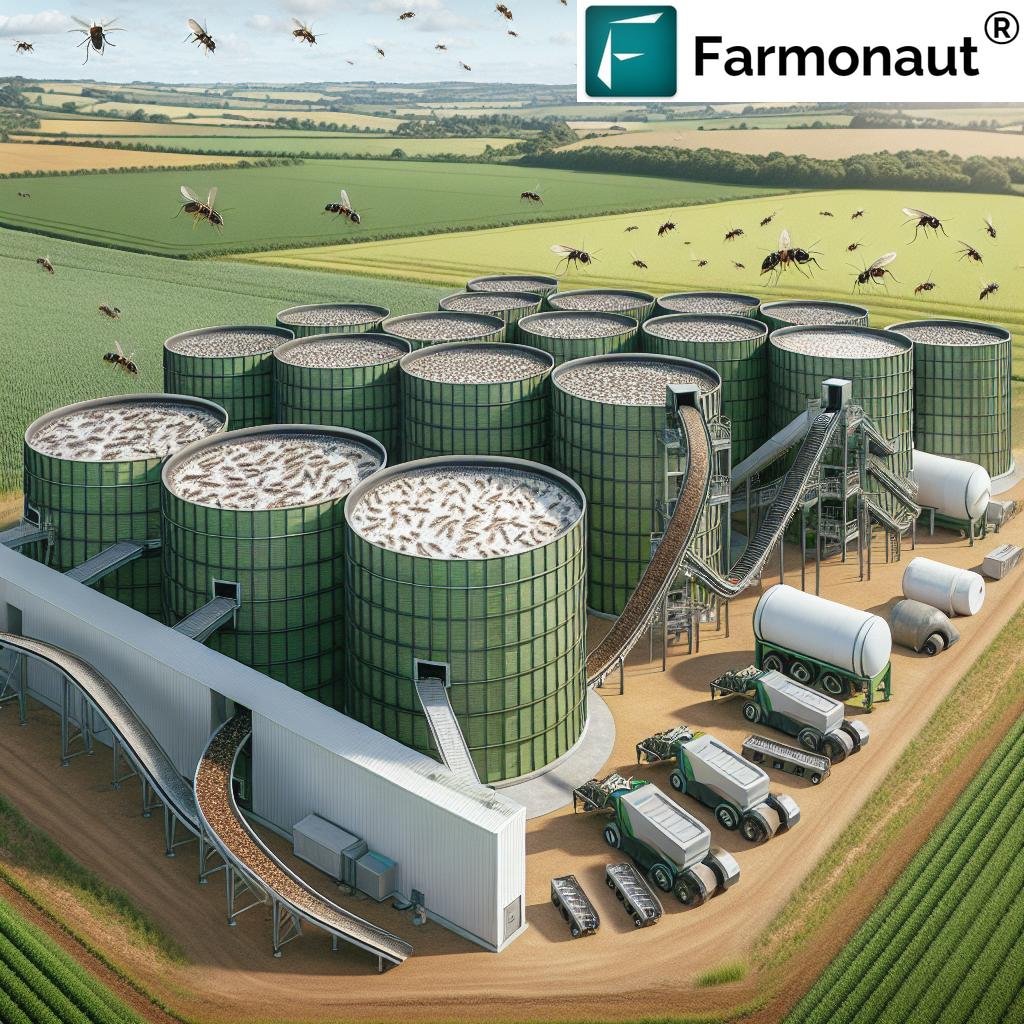Cupressocyparis Leylandii: Leylandii Hedge Benefits 2026 – Environmental, Agricultural & Forestry Insights
“In 2025, Leylandii hedges can reduce soil erosion by up to 30% on sloped agricultural land.”
Table of Contents
- What is Cupressocyparis Leylandii?
- Cupressocyparis Leylandii in Modern Forestry and Agriculture (2026)
- Environmental Impact and Sustainability
- Comprehensive Benefits of Cupressocyparis Leylandii Hedges
- Unique Roles in Erosion Control, Soil Health & Land Rehabilitation
- Biodiversity Enhancement within Agricultural and Forestry Landscapes
- Challenges and Best Practices for Sustainable Management
- Farmonaut: Empowering Smart Land and Hedge Management
- Comparative Benefits Table: Cupressocyparis Leylandii vs Alternatives
- FAQ: Cupressocyparis Leylandii & Leylandii Hedge
- Conclusion
What is Cupressocyparis Leylandii?
Cupressocyparis leylandii, commonly referred to as leylandii or the leylandii hedge, is a hybrid conifer tree that has gained significant prominence in agricultural and forestry land management due to its rapid growth and unmatched adaptability. This unique species is the result of a cross between Monterey cypress (Cupressus macrocarpa) and Nootka cypress (Chamaecyparis nootkatensis).
Originating from the hybridization of two robust species, its distinctive characteristics make it stand out amongst conifers, especially in temperate regions where wind, soil degradation, and privacy concerns are critical for land managers and farmers. Recently, the leylandii hedge has been increasingly used in landscape planning, environmental rehabilitation, and as living barriers in multiple agricultural contexts.
Key Attributes of Cupressocyparis Leylandii:
- Hybrid conifer: Cross of Monterey cypress and Nootka cypress
- Stands among one of the fastest-growing conifers globally
- Dense foliage and impressive height enable a protective barrier
- Highly adaptable to various soil types and environmental conditions
- Commonly used as windbreaks, privacy screens, and for environmental management
Cupressocyparis Leylandii in Modern Forestry and Agriculture (2026)
The role of the cupressocyparis leylandii within forestry and agricultural land management has never been more vital than in 2026. As environmental uncertainties and climate variability continue to grow, the need for protective and highly adaptable hedges only intensifies.
Cupressocyparis leylandii hedges are primarily valued for:
- Windbreaks: Providing immediate and lasting shelter for crops and livestock against harsh, strong, and often seasonal winds.
- Erosion Control: Their dense and tall habit minimizes soil erosion, particularly in regions prone to wind-driven degradation and runoff.
- Microclimate Regulation: By reducing wind speed and decreasing evaporation rates, they help maintain moisture in the soil, creating microclimates conducive to plant and animal health.
- Rapid Growth: With a growth rate of 60-90 cm (2-3 feet) annually under optimal conditions, cupressocyparis leylandii can quickly reach considerable height, serving immediate needs for shelter or boundary delineation.
Why Farmers and Land Managers Prefer Leylandii in 2026:
- Rapid establishment and effective protection of agricultural land
- Quicker results and cost savings—especially compared to some native alternatives
- Practical choice for situations where time or results are critical
- Easily maintained with regular care to ensure desired height and thickness
Environmental Impact and Sustainability – Leylandii Hedge in 2026
The environmental importance of cupressocyparis leylandii hedges lies in their adaptability, eco-functionality, and their relevance in sustainable land management. Here’s why they are shaping the future:
Key Environmental Advantages
- Effectively Reduce Erosion: By creating a living barrier, they protect soil surfaces and reduce erosion – a crucial benefit in regions prone to severe weather and land degradation.
- Support Biodiversity: When combined within mixed hedgerows or agroforestry systems, leylandii hedges aid in supporting native and migratory bird species, insects, and more.
“Leylandii plantations may increase local bird species richness by 25% in sustainable forestry settings by 2026.” - Carbon Sequestration: The rapid growth and dense biomass of leylandii make it a significant carbon sink, aiding environmental mitigation efforts.
- Rehabilitation of Disturbed Land: Their vigorous root system helps stabilize soil and restore disturbed landscapes (such as those affected by mining or infrastructure projects).
In addition, careful management and proper integration within diversified landscapes not only preserve but also enhance biodiversity and soil health. They make a compelling case for being at the heart of sustainable land and environmental planning for 2026 and beyond.
Sustainability Tip
When planning significant leylandii hedge installations, it is advisable to blend cupressocyparis with selected native species to amplify wildlife benefits and promote ecological resilience.
Looking for Affordable Satellite-based Monitoring for Your Hedgerows or Agricultural Land?
Explore Farmonaut’s subscription plans to monitor crop health, soil condition, and more – all in real time!
Want to integrate Farmonaut’s satellite data into your own systems?
-
Farmonaut API: Connect directly to high-resolution crop, soil, and forestry data for your leylandii hedge and agricultural projects.
API Developer Docs for full integration support and usage guidelines.
Comprehensive Benefits of Cupressocyparis Leylandii Hedges for Land and Environmental Management
Key Benefits and Unique Strengths
- Extraordinary Growth Rate: Leylandii can grow 60–90 cm or 2–3 feet annually, reaching considerable height within a few years. This makes them ideal for immediate shelter, windbreak, or boundary delineation.
- Effective Windbreaks: Due to their dense foliage and tall habit, they create strong shelter belts that reduce wind speed, preventing crop disruption and minimizing water loss.
- Soil Erosion Control: Leylandii’s extensive root network and living barrier function efficiently bind soil, reducing surface erosion and nutrient loss even on steep or degraded land.
- Microclimate Creation: These hedges maintain stable environments by decreasing evaporation rates, protecting both plant and animal health.
- Biodiversity Support: When carefully managed in diversified plantings, leylandii can enhance habitats for birds, pollinators, and small wildlife.
- Rehabilitation Capability: Their vigorous rooting system allows them to thrive and reclaim disturbed or degraded land in both agricultural and infrastructure contexts.
- Versatile Application: Leylandii are used not just in agriculture and forestry, but for green infrastructure—stabilizing areas near roads, highways, and mining reclamation zones.
Examples of Annual Growth and Practical Application
When planted under optimal conditions, these hedges can achieve their target height within just a few years, making them a practical choice for farmers and managers needing immediate boundary or windbreak solutions.
Integration with Advanced Technologies
In 2026, satellite-based monitoring and AI-driven advisory platforms (like those offered by Farmonaut) facilitate the tracking of leylandii growth, soil health, and overall environmental impact.
- Real-time insight into leylandii hedge status
- Early detection of potential problems
- Optimized scheduling for maintenance and trimming
- Data-driven decision making for maximum productivity
Supporting Your Sustainability Goals
If you’re looking to quantify and manage your carbon sequestration or pursue traceability solutions for your hedgerows,
Farmonaut’s Carbon Footprinting and Product Traceability services provide transparent, data-backed records for environmental accountability.
Unique Roles in Erosion Control, Soil Health & Land Rehabilitation
The soil stabilization capabilities of leylandii hedge installations are central to their adoption in restoration and land rehabilitation projects in 2026. Here’s how:
- Anchoring Degraded Soils: The robust, fibrous root structure anchors topsoil, significantly reducing run-off, siltation, and erosion, particularly on slopes and mining reclamation sites.
- Improving Microbial Activity: Leylandii not only shield the ground but provide organic matter from leaf litter, subtly enhancing soil fertility and microbial life over time.
- Rapid Rehabilitation: Their unmatched growth rate and tolerance for poor conditions (soil, wind, drought) make them indispensable for rapidly reclaiming disturbed landscapes.
For those managing forest or agroforestry restoration on difficult terrain,
Farmonaut’s Crop & Forest Plantation Advisory can guide you through site monitoring and optimize your project’s outcomes with real-time, satellite-derived data.
Biodiversity Enhancement within Agricultural and Forestry Landscapes
One challenge of monocultural leylandii hedge plantations is potential reduction of habitat heterogeneity. However, when incorporated within mixed hedgerows, the species offers enormous biodiversity benefits:
- Bird, Insect & Mammal Habitat: Leylandii provides dense cover for nesting birds and shelter for small mammals, while feeding insects and pollinators when intermixed with flowering hedges or native species.
- Shelter Belts & Wildlife Corridors: When aligned as continuous belts, leylandii allow animals to move safely across agricultural landscapes, linking habitats and boosting genetic diversity.
- Increasing Species Richness: Data suggest up to 25% increases in local bird species by 2026 where leylandii hedges have been properly managed in concert with native plantings.
For farmers and land managers tracking biodiversity gains or evaluating habitat effectiveness, real-time data from solutions like
Farmonaut’s Large Scale Farm Management provides mapped, quantitative evidence for planning and reporting.
Challenges and Best Practices for Sustainable Leylandii Hedge Management
Despite their benefits, leylandii hedges require careful attention and management, especially due to their vigorous growth and potential to impact adjacent vegetation.
Key Considerations & Recommendations
- Regular Pruning: Unrestrained growth can lead to shading out of neighboring crops or plants. Annual trimming/maintenance is essential to control size and density.
- Avoiding Pure Monoculture: Extended leylandii monocultures can reduce local plant and animal diversity. Always aim for species mixtures in landscape plans where feasible.
- Utility vs. Impact Balance: For roadsides or infrastructure projects, assess the potential interference with native flora or open habitats before large-scale establishment.
- Selective Use of Wood: The wood of leylandii, while soft and less durable, can be used for non-structural products, mulch, or fencing, ensuring minimal waste.
Tip for Sustained Productivity
For farmers needing remote monitoring and maintenance tracking for hedgerows across larger land parcels,
Farmonaut Fleet and Resource Management tools streamline logistics, helping optimize field crew activities and cost.
“Leylandii plantations may increase local bird species richness by 25% in sustainable forestry settings by 2026.”
Farmonaut: Empowering Smart Land and Hedge Management
As satellite technology transforms modern agriculture and forestry, our platform (Farmonaut) leads the way with solutions that enhance leylandii hedge monitoring, environmental reporting, and yield optimization. Here’s how we help you make the most of your investment in sustainability:
- Real-Time Field Mapping: Up-to-date satellite imagery and vegetation indices (like NDVI) for field-by-field analysis of leylandii health and impacts.
- AI Advisory: Our Jeevn AI system gives real-time weather/risk updates and tailored guidance for hedge maintenance, pest/disease management, and overall land health.
- Asset Management: Integrated tools for tracking planting cycles, field operations, and resource allocation. Crop Loan & Insurance verification helps secure your hedges/infrastructure projects easily and transparently.
- Environmental Impact Tracking: Accurate, real-time reporting on carbon sequestration, biodiversity, and erosion control—key metrics for sustainability certifications or compliance requirements.
Farmonaut Products & How They Help
-
Carbon Footprinting for Hedgerow Projects:
Monitor your leylandii’s carbon capture contribution and document environmental benefits for sustainability programs. -
Traceability:
Transparently track leylandii planting origins and maintenance, ideal for certification or sustainable supply chain claims. -
Large Scale Farm Management:
Oversee multi-field hedgerow and auxiliary infrastructure projects remotely, improving operational control. -
Fleet Management:
Coordinate teams and equipment across your operation for leylandii planting, maintenance, and land rehabilitation tasks.
Comparative Benefits Table: Cupressocyparis Leylandii vs Traditional Hedgerow Alternatives
| Feature / Benefit | Cupressocyparis Leylandii (2025–2026 Estimated Value) |
Common Alternatives (2025–2026 Estimated Value) |
Sustainability Impact |
|---|---|---|---|
| Erosion Control Effectiveness (%) | Up to 30% reduction in erosion on sloped land | 15–18% (average for native shrub hedgerows) | Superior soil retention and land conservation |
| Biodiversity Support (bird/insect species) | Increases local bird species richeness by up to 25% with mixed plantings | Baseline; requires mature age for similar gains | Boosts ecosystem resilience and diversity |
| Carbon Sequestration Rate (kg CO₂/year/hectare) | 5,500–6,200 kg | 2,800–3,500 kg | Excellent for climate change mitigation |
| Growth Rate (meters/year) | 0.6–0.9 meters (2–3 feet) | 0.2–0.3 meters | Immediate shelter/windbreak function |
| Maintenance Requirement (hours/year) | 6–12 hours per 100 meters per year | 8–16 hours per 100 meters per year (slower initial period, less pruning after establishment) | Reasonable upkeep with significant protective returns |
FAQ: Cupressocyparis Leylandii & Leylandii Hedge
What is the main advantage of Cupressocyparis leylandii over native hedge species?
The principal advantage is its rapid growth rate (up to 60–90 cm/year), providing immediate protection and shelter. For farmers and managers needing quick results for windbreaks or erosion control, leylandii is unrivaled.
Are leylandii hedges suitable for all regions?
While cupressocyparis leylandii is highly adaptable, it thrives best in temperate climates. Its use should be assessed case-by-case, especially in areas with protected native vegetation or unique habitat needs.
How often do leylandii hedges need pruning?
Annual to semi-annual trimming is recommended to maintain the desired hedge height and density. Timely maintenance prevents over-shading and ensures sustainability.
Does leylandii support wildlife?
When managed within mixed hedgerows, leylandii strongly supports biodiversity, providing shelter for birds, small mammals, and pollinating insects, especially in 2025–2026 sustainable forestry applications.
How can Farmonaut help in leylandii hedge management?
Farmonaut provides real-time satellite monitoring, AI-driven advisory, fleet tracking, and carbon reporting for your leylandii plantations—optimizing yield, sustaining ecosystem health, and enhancing traceability.
Conclusion
The cupressocyparis leylandii hedge remains a vital fixture in sustainable land management, forestry, and agriculture as we progress into 2026 and beyond. Its extraordinary combination of rapid growth, environmental protective capacity, and adaptability makes it a top choice for addressing modern challenges such as soil erosion, biodiversity loss, and climate resilience.
Careful management—including appropriate species selection, regular pruning, and integration within mixed-plant hedgerows—ensures that the benefits of leylandii are maximized, without compromising ecological health.
For farmers, land managers, and sustainability professionals, leveraging advanced platforms like Farmonaut can provide essential, real-time insights and technology-enabled support for every stage of land and hedge stewardship. As sustainability becomes a defining theme of future agriculture and forestry, cupressocyparis leylandii will continue to play a significant role in shaping healthy, productive, and environmentally responsible landscapes worldwide.














